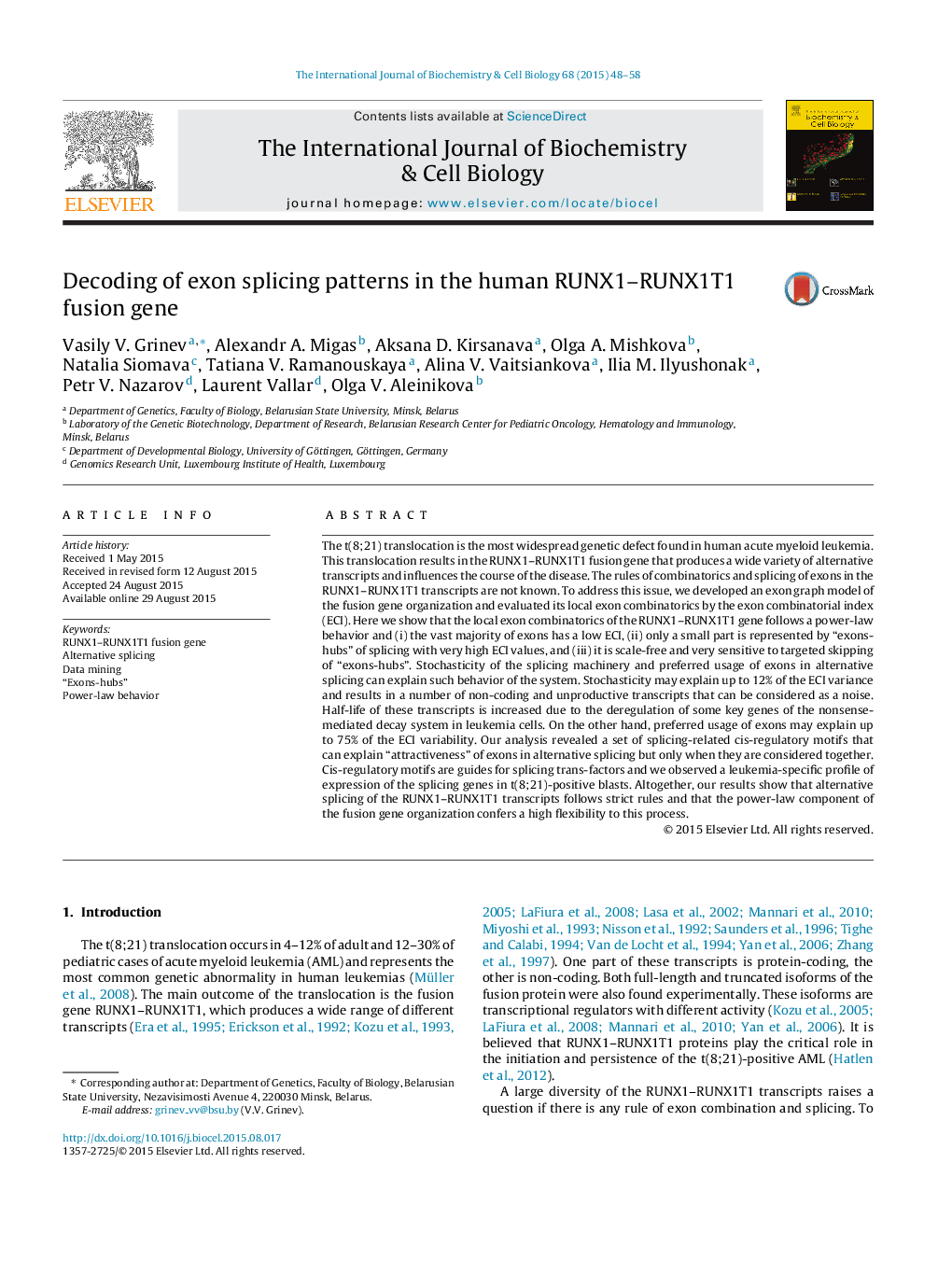| کد مقاله | کد نشریه | سال انتشار | مقاله انگلیسی | نسخه تمام متن |
|---|---|---|---|---|
| 1983445 | 1539876 | 2015 | 11 صفحه PDF | دانلود رایگان |

• A new model for the organization of the RUNX1/RUNX1T1 fusion oncogene was developed.
• Expression of splicing and NMD genes is deregulated in t(8;21)-positive AML.
• Alternative splicing of the RUNX1/RUNX1T1 mRNAs follows a power-law behavior.
• Alternative splicing is extremely sensitive to targeted skipping of “exons-hubs”.
The t(8;21) translocation is the most widespread genetic defect found in human acute myeloid leukemia. This translocation results in the RUNX1–RUNX1T1 fusion gene that produces a wide variety of alternative transcripts and influences the course of the disease. The rules of combinatorics and splicing of exons in the RUNX1–RUNX1T1 transcripts are not known. To address this issue, we developed an exon graph model of the fusion gene organization and evaluated its local exon combinatorics by the exon combinatorial index (ECI). Here we show that the local exon combinatorics of the RUNX1–RUNX1T1 gene follows a power-law behavior and (i) the vast majority of exons has a low ECI, (ii) only a small part is represented by “exons-hubs” of splicing with very high ECI values, and (iii) it is scale-free and very sensitive to targeted skipping of “exons-hubs”. Stochasticity of the splicing machinery and preferred usage of exons in alternative splicing can explain such behavior of the system. Stochasticity may explain up to 12% of the ECI variance and results in a number of non-coding and unproductive transcripts that can be considered as a noise. Half-life of these transcripts is increased due to the deregulation of some key genes of the nonsense-mediated decay system in leukemia cells. On the other hand, preferred usage of exons may explain up to 75% of the ECI variability. Our analysis revealed a set of splicing-related cis-regulatory motifs that can explain “attractiveness” of exons in alternative splicing but only when they are considered together. Cis-regulatory motifs are guides for splicing trans-factors and we observed a leukemia-specific profile of expression of the splicing genes in t(8;21)-positive blasts. Altogether, our results show that alternative splicing of the RUNX1–RUNX1T1 transcripts follows strict rules and that the power-law component of the fusion gene organization confers a high flexibility to this process.
Journal: The International Journal of Biochemistry & Cell Biology - Volume 68, November 2015, Pages 48–58